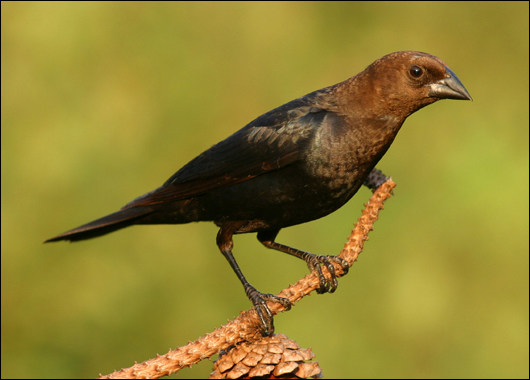Nest parasitism by the brown-headed cowbird is one of the reasons for the decline in songbird numbers across North America. Trapping of cowbirds has proven to be effective in increasing successful reproduction of many songbird species including the black-capped vireo. As such, participants in EQIP or WHIP may receive payment for trapping cowbirds according to the guidelines developed by Texas Parks and Wildlife Department (TPWD).
The payment for this wildlife management practice will be made annually for three consecutive years at the rate of $6.00 per acre for a 100-acre trap unit, or the equivalent of $600 per year for three years. If a participant enrolls less than 100 acres, the payment is $6.00 per acre. The payment is intended to provide an incentive for the construction of the trap as well as maintenance and operation of the trap. This payment is intended to cover about 50% to 60% of the total cost of trapping during the three year period.

EQIP or WHIP participants who receive this payment must be trained and certified by TPWD before the trap is put into operation. Cowbird traps shall be constructed and operated according to TPWD guidelines from March 1 to May 31. All required record keeping and reporting must be kept current as outlined in the TPWD guidelines.
Trapping as a management practice must be done in or near pastures where increased songbird populations are desired and where cowbirds are present. Ideally cowbird traps should be placed in close proximity to livestock. Mobile traps can be moved from pasture to pasture as livestock are moved.
Participants will verify to Natural Resource Conservation Service that they have been trained and certified and will provide a summary of cowbird trapping data for each year the payment is planned.
Participants should contact TPWD Biologist, Terry Turney, (512-396-0321), or Trey Carpenter (512-461-9909 or 512-756-2945) for information on becoming trained and certified in cowbird trapping. Participants should also be familiar with other cowbird trapping information found on the TPWD website.